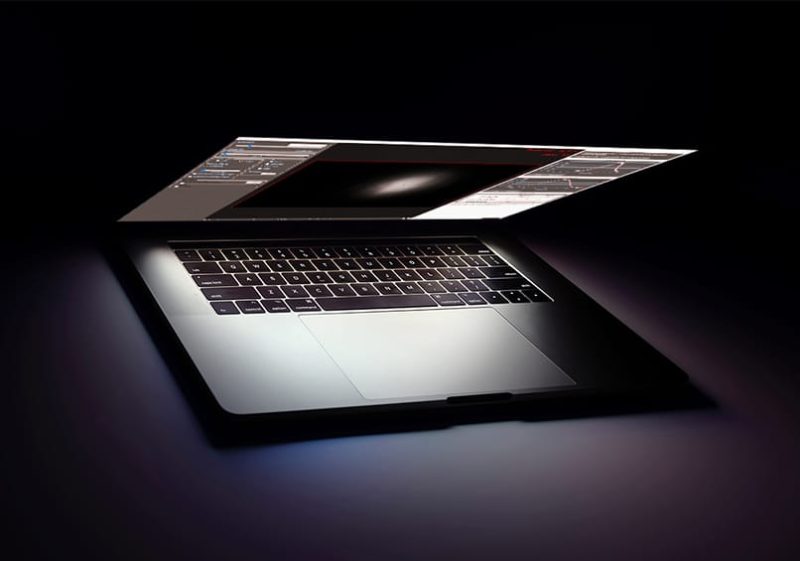Infratest Software
Test your electro-optical devices with Infratest Software
Test all your electro-optical devices
with Infratest®
Infratest Software is a modular software suite dedicated to electro-optical systems test and qualification: cameras, thermal imagers, Night Vision Devices and binoculars, goggles, sensors…
Infratest Software supports any kind of device and electro-optical system.
Based on referenced algorithms, Infratest Software provides high accuracy measurement data for visible and infrared cameras (NIR, SWIR, IR) in real-time.
Infratest Software is also particularly efficient for Night Vision Devices and Laser Rangefinders test and development.

INFRATEST SOFTWARE
Supported devices
Thermal cameras (cooled or uncooled)
NETD, spatial resolution (LSF/MTF), MRTD and DRI ranges, alignment of optical axis vs mechanical axis
Visible to SWIR cameras
Noise equivalent Irradiance, effective focal length, resolution (MRC), distortion, field of view, latency
Night vision gun sights & goggles
Gain, resolution, infinity focus, zero and range of eyepiece, parallelism of goggles axes, figure of merit, spot defect
Laser rangefinders and designators
Alignment, beam profiling, divergence, accuracy of distance measurement, laser pulse energy and power
Multiple axes optronic systems
Camera axis alignment, boresighting between cameras (any type) and mechanical axis
Multi-functional binocular systems
Alignment of axes, large apertures compatible
Focal plane arrays and cameras
Bad pixel location, non-uniformity correction, temporal noise and fixed pattern noise measurement, detectivity, responsivity
INFRATEST SOFTWARE
Supported devices
Thermal cameras (cooled or uncooled)
NETD, spatial resolution (LSF/MTF), MRTD and DRI ranges, alignment of optical axis vs mechanical axis
Visible to SWIR cameras
Noise equivalent Irradiance, effective focal length, resolution (MRC), distortion, field of view, latency
Night vision gun sights & goggles
Gain, resolution, infinity focus, zero and range of eyepiece, parallelism of goggles axes, figure of merit, spot defect
Laser rangefinders and designators
Alignment, beam profiling, divergence, accuracy of distance measurement, laser pulse energy and power
Multiple axes optronic systems
Camera axis alignment, boresighting between cameras (any type) and mechanical axis
Multi-functional binocular systems
Alignment of axes, large apertures compatible
Focal plane arrays and cameras
Bad pixel location, non-uniformity correction, temporal noise and fixed pattern noise measurement, detectivity, responsivity
QUALITY
R&D
MAINTENANCE
Infratest
Civil & military applications
Infratest is particularly appreciated for such applications:
R&D : product development, optimization and qualification
Quality: test and control
Maintenance: proper operation check, operational condition maintenance
QUALITY
INFRATEST SOFTWARE
Civil & military applications
Infratest Software is particularly appreciated for such applications:
R&D: product development, optimization and qualification
Quality: test and control
Maintenance: proper operation check, operational condition maintenance
R&D
MAINTENANCE
Infratest Software Main Advantages
HIGH ACCURACY
MODULAR
VERSATILE
Infratest main advantages
HIGH ACCURACY
MODULAR
VERSATILE
INFRATEST SOFTWARE
Test bench & related tools optical stimuli automatic control
Azimuth, elevation adjustment
Motorized stages position
Video signal management
▶ Real time acquisition
▶ Live display
▶ Image acquisition
▶ Accurate measurement analysis
▶ Full performances calculation – Auto saved data – Multi-format data export (.csv, .xml, .png, .html)
Video protocols
Infratest Software is compatible with a wide range of video protocols, even with the highest definition:
▶ Analog (CCIR, RS170, PAL, NTSC)
▶ Camera Link
▶ USB3 Vision
▶ 3G SDI, HD SDI, SD SDI
▶ GigE Vision
▶ DVI, HDMI

Custom scenario
The flexible structure of Infratest Software allows the operator to build-up customized test scenarios for any electro-optical system.
The operator only has to pick from an exhaustive list of hardware control functions and accurate tests according to their needs. Then, they can create their own sequences with the « drag & drop » function.
Thanks to a user-friendly interface, it is easy to create and drive customized and fully automated benches based on HGH products portfolio including blackbodies, ISV visible to SWIR sources or IRCOL and BIRD benches. It is a time-saving function leading to unlimited testing capabilities !
Infrared & visible technical definitions
Visible cameras, near and short-wave infrared cameras, and thermal imagers are used for imaging to detect different radiation types. Visible cameras capture images in the visible spectrum of light, while near and short-wave infrared cameras detect radiation beyond the visible spectrum, mandatory for seeing through smoke, fog, or even certain materials. Thermal imagers detect radiation in the infrared spectrum and are often used for heat signatures detection.
A focal plane array (FPA) is an image sensor used in digital cameras, thermal cameras, and other imaging systems. Their grid of pixels detects incoming light and convert it into electrical signals that can be processed into an image. Unlike traditional cameras that use a single sensor to capture an image, a focal plane array has thousands or even millions of individual sensors arranged in a grid pattern. Each sensor detects a limited portion of the incoming light, creating together a complete image. Focal plane arrays are used in high-resolution imaging applications (surveillance systems, astronomy, and remote sensing). In thermal imaging systems they are able to detect the infrared radiation emitted by objects. Focal plane array pixels are sensitive to different wavelengths of light depending on the specific material used. Overall, the FPA has revolutionized the way images are captured and processed, enabling high-quality imaging in a wide range of applications.
Thermal cameras, also known as infrared cameras, are imaging systems that detect and record the infrared radiation emitted by objects in their field of view. These cameras operate in the thermal range of the electromagnetic spectrum, typically from around 8 to 14 microns. Thermal cameras allow to detect temperature variations between objects and their surroundings. Thermal cameras are appreciated in many applications, including building inspection, electrical inspection, and industrial process monitoring. They are also used in law enforcement and military applications for surveillance, target acquisition, and search and rescue operations. Thermal cameras identify objects in low-light or no-light conditions, as they detect heat rather than visible light. They can also see through smoke, dust, and fog, making them useful for navigation and search and rescue operations in challenging environments. Thermal cameras are available in a range of form factors, from handheld devices to large fixed-mount systems. They can also be integrated with other imaging systems, such as visible light cameras, to provide enhanced imaging capabilities. Thermal cameras are a valuable tool for a wide range of applications where the detection and measurement of temperature differences are important, and where visible light cameras may not be effective.
Near-Infrared (NIR) and Short-Wave Infrared (SWIR) cameras are imaging systems operating in the infrared portion of the electromagnetic spectrum. Both NIR and SWIR cameras are similar in that they detect and record infrared radiation, but they differ in their spectral range and applications. NIR cameras typically operate in the range of 0.75 to 1.4 microns and are used for a variety of applications, including medical imaging, food inspection, and biometric identification. NIR radiation is particularly useful for these applications because it can penetrate biological tissue to a certain depth, allowing for non-invasive imaging of the body. SWIR cameras operate in the range of 0.9 to 1.7 microns. They are appreciated for applications such as semiconductor inspection, surveillance, and remote sensing. SWIR radiation also allows to penetrate materials opaque to visible light, allowing for imaging through these materials. NIR and SWIR cameras are valuable for a wide range of applications and are increasingly used in research, industry, and security applications.
Middle Wave Infrared (MWIR) refers to a range of electromagnetic radiation with wavelengths between 3 and 8 microns. This region of the infrared spectrum is of particular interest because it includes the thermal radiation emitted by objects at normal temperatures, making it useful for thermal imaging and sensing applications. MWIR radiation is absorbed by a variety of materials, including water, carbon dioxide, and certain types of glass. This makes it useful for a range of applications, including thermal imaging for industrial processes, gas leak detection, and military surveillance. MWIR radiation is also studied by astronomers to better understand the properties of stars and galaxies. Overall, the MWIR portion of the electromagnetic spectrum is a valuable tool for a range of scientific and technological applications..
Short-Wave Infrared (SWIR) is a part of the infrared spectrum that ranges from approximately 0.9 to 1.7 microns in wavelength. SWIR can penetrate opaque to visible light materials, such as silicon, glass, and certain types of plastics. SWIR radiation is used in several applications, including semiconductor inspection, food sorting, and surveillance. It is also used in imaging systems for remote sensing, where it can detect differences in the reflectivity and absorption of light by different materials, allowing for the detection of hidden objects or changes in vegetation. SWIR imaging main advantage is its ability to see through smoke, fog, and other atmospheric conditions that can interfere with other forms of imaging. This makes SWIR useful for military and security applications, such as surveillance and target acquisition.
Multi-sensor gimbaled systems are complex systems requiring to be tested to ensure their proper operation. Here are some steps that can be taken to test a multi-sensor gimbaled system:
– Visual inspection: visual inspection of the gimbaled system to ensure that all parts are correctly installed and functioning properly. Check for any physical damage, misalignment, or wear and tear.
– Functional tests: functional tests to ensure that each sensor is working as expected. Verify that the sensors are correctly aligned and that they provide accurate and reliable data. This can be done by conducting a series of tests to see how the system responds to various inputs.
– Environmental tests: environmental tests to ensure that the gimbaled system can withstand the conditions it will be exposed to during operation. This includes temperature, humidity, vibration, and shock test.
– Calibration: critical for ensuring that the sensors provide accurate data. This involves adjusting the sensor outputs to match the expected values. Conduct a calibration test to verify that the sensor outputs are within acceptable tolerances.
– Integration testing: integration testing ensures that the gimbaled system works seamlessly with other systems that it will be connected to during operation. This includes testing the system’s interfaces and communications protocols.
– Stress testing: stress testing determines the system’s performance under extreme conditions. This can include tests for maximum load, maximum temperature, and maximum vibration.
– Validation and verification: validation and verification tests ensure that the gimbaled system meets the requirements and specifications of the intended use. This includes verifying that the system is reliable, accurate, and safe to operate.
Night vision devices such as binoculars, monoculars, and goggles use a combination of technologies to amplify ambient light or infrared radiation to produce a visible image in low-light conditions. These devices are widely used in military and security applications for surveillance and target acquisition.
Laser rangefinders and laser pointers are highly appreciated in industrial and scientific applications for precise distance measurements or to point to specific areas of interest. It’s important to note that laser pointers should always use eye-safe wavelengths to avoid any potential harm to human eyesight
